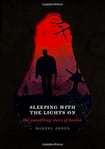
Darryl Jones, an authority on horror masters including MR James, makes it his mission in this book to "stress the cultural proliferation of horror, and its plurality". "Horror is tentacular, spreading everywhere. It is Protean, taking many forms." Rather than taking a chronological approach, or dividing its chapters by art form, Sleeping with the Lights On moves from theme to theme, addressing the body, the mind, the occult, the invention of monsters and their enduring fascination.
Rather than putting forward a single strong thesis (apart, perhaps, from the thesis that horror is wide-ranging and multifarious), Jones draws on a dizzying number of sources, skilfully moving between theory and philosophy to cult films and popular fiction, treating each with care and a respect not always afforded to such works.
Why, Jones asks, is the high-culture horror of Shakespeare or Euripides more palatable, more acceptable, than the infamous "video nasty" films
What comes across most vividly is his passion for the subject: this is a book that makes a reader want to read, to watch, and to listen more carefully. Oxford University Press, too, are to be commended for the low retail price and the quality production (the hardback features a cover with a cut-out in the shape of a light bulb, behind which zombies and witches roam across a blood-red landscape).
Jones nuances his study throughout with an awareness of the class politics of horror: why, for instance, is the high-culture horror of Shakespeare or Euripides, which is rife with images and scenes of grotesque violence, more palatable, more acceptable, than the infamous “video nasty” films prohibited in the UK under the Video Recordings Act of 1984? Why has no one seriously considered, for example, banning Titus Andronicus? As both a radical and a conservative cultural form, Jones shows that horror can be avant-garde, but can also be a tool for policing dissent.
Anyone can sneak up behind you, shout 'BOO!' very loudly, and make you drop your ice cream. But this says nothing about the state of your soul
Returning constantly to the ritualistic nature of horror, ranging from art-house cinema to classical literature, from The Bacchae to Jordan Peele’s Get Out (2017), Jones explores the genre’s subversive potential. He considers writers such as Angela Carter, Bram Stoker, Zora Neale Hurston, and Stephen King; philosophies of enchantment and science in the Victorian era; slasher films and so-called “torture porn” films such as Hostel and the Saw series. Moving deftly between “high” and “low” culture, Jones shows us how horror muddies the boundaries between the two, blending the sensational and the sophisticated in anarchic ways.
In the afterword, however, he also laments the assimilation of horror into a mode he terms “unhorror”, in which the genre, as in the Twilight series, becomes totally incorporated within capitalism, shutting off the possibility of opposition. In this way, horror stops being scary, or even disturbing (except perhaps, as Jones quips, to a Marxist): “Anyone can sneak up behind you, shout ‘BOO!’ very loudly, and make you drop your ice cream. But this says nothing about the state of your soul, your place in the universe, the social function of violence, the evils of political inequality, or any of the other serious questions horror is accustomed to asking.”
Rise of zombies
Horror, as any reader or film-goer will know, is a cultural form saturated in signs and conventions: in fact, as Jones notes, this is part of the joy of it. Going to see a new horror film, the audience enjoys the participatory nature of the experience, noting references to earlier films, subversions of old tropes.
Sleeping with the Lights On focuses primarily on the western tradition ("a case could plausibly be made that the Western literary tradition is a tradition of horror"), drawing attention to the ways in which the Other is reformulated over time; how cultural anxieties manifest, burst out and are controlled or exploited. The recycling and reappropriation of tropes allows horror to be an unusually self-reflexive genre.
Bringing us right up to late 2017, Jones’s study is an overview in the best sense, and considers the continuing evolution of horror as cultural anxiety takes on new shapes. Jones notes the rise of zombies as a sort of cultural underclass in the wake of the financial crisis; the rise of digital horror, playing out fears about life lived online; and of course the wave of ecohorrors responding to contemporary fears about environmental disaster and global warming.
This is a fine introduction to, and defence of, a typically various popular form. In an age of anxieties new and old, Jones’s exploration of taboo, control, and the politics of fear, seems particularly timely and potent.












